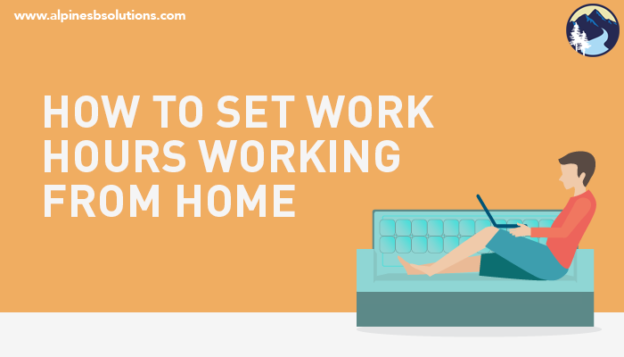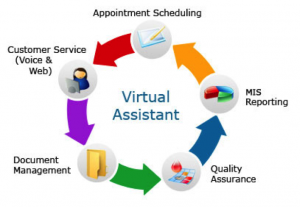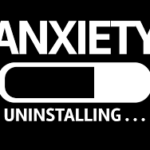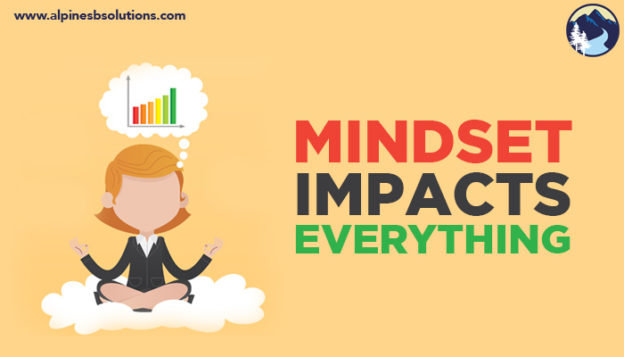The ability to design your own work schedule is a double-edged sword. It’s great not feeling chained to your desk for the arbitrary 9-5 grind.
But it’s also easy to avoid ever setting a schedule. Before you know it, you’re always either working or thinking about work. It’s increasingly difficult to leave work at work. Projects that could be done in an hour end up taking longer.
The irony of the “I don’t need to abide by a set schedule” life is that we often function better when we create a schedule.
The Benefit of Setting Work Hours
Many work-from-home individuals resist setting work hours like the plague. One huge appeal of being your own boss is the freedom that comes with control over your schedule right?
But the reality of failing to set work hours tells a different story. Not sticking to a work schedule ends up hurting you in the long wrong in different ways.
- It’s hard to leave work at work. When work stops at 5, it’s easier to stop thinking
 about work at 5. When there is no firm end to the work day, it’s so much harder to transition from “work mode” to “living your life mode.” You feel guilty watching TV and wonder if you should go get that one article done. You daydream thinking of your to-do list. You always feel “on,” making it difficult to give yourself the rest you need.
about work at 5. When there is no firm end to the work day, it’s so much harder to transition from “work mode” to “living your life mode.” You feel guilty watching TV and wonder if you should go get that one article done. You daydream thinking of your to-do list. You always feel “on,” making it difficult to give yourself the rest you need. - You waste precious mental energy. Each day you wake up without a firm schedule. Each day, you waste time and energy deciding how much you will work and when. It’s the element of decision fatigue. The more decisions we make each day, the more drained we become. It’s why superstars like Steve Jobs wore the same outfit every day. One less decision to make meant a bit more energy for more important matters.
- Tasks take longer than they should. Parkinson’s Law basically states however long a task can take is usually how long it will. Maybe you wake up and know, if needed, you could log a 10-hour day today to get that big project done. What ends up happening? You tend to work that 10-hour day. The beauty of the set work schedule is work is only allowed to fill those hours. Usually, everything always gets done.
These problems can be tackled (or at least minimized) by setting a consistent work schedule. The initial constraint of work hours ends up giving you more free time and freedom to enjoy your time outside work guilt free.
Setting an Optimized Work Schedule
 Here is where you get to enjoy the freedom of being your own boss. Maybe your peak creativity hours are early morning and early evening. In the middle of the day, you suffer from the afternoon slump. So work in the peak hours and go workout or run errands when your brain power dips.
Here is where you get to enjoy the freedom of being your own boss. Maybe your peak creativity hours are early morning and early evening. In the middle of the day, you suffer from the afternoon slump. So work in the peak hours and go workout or run errands when your brain power dips.
A work schedule does not mean you must bow down at the altar of the 9-5 work week. Those hours are not ideal anyway! In fact, with the right productivity tactics you may get 8 hours of work done in 7 or 6. All a work schedule means is setting strict work hours and strict non-work hours. If you can accomplish you work between 10-4, that’s great!
You can even set a different work schedule for different days of the week. Maybe you are a work-from-home parent taking advantage of a babysitting co-op. On Tuesday mornings, you get to wrangle the group’s kiddos to the library activity. So on Tuesdays, your work day starts a few hours later.
It doesn’t matter what type of schedule you make. What matters is knowing going into the day which hours you work. Designated work hours protect your “non-work” time.
 Once you create a schedule, protect it fiercely. Don’t check your email outside of work hours. Let your clients know what hours they can expect to reach you by phone…and don’t pick up if it’s outside of those (or work into your contract it’s a $75 fee every time they do). When you are done for the day, be done. Don’t fall into the trap of well I could get one more thing done. Allow yourself to rest and relax!
Once you create a schedule, protect it fiercely. Don’t check your email outside of work hours. Let your clients know what hours they can expect to reach you by phone…and don’t pick up if it’s outside of those (or work into your contract it’s a $75 fee every time they do). When you are done for the day, be done. Don’t fall into the trap of well I could get one more thing done. Allow yourself to rest and relax!
Working from home can be the ideal set up. Setting optimized work hours helps you be the ideal worker and live a balanced life. It’s a win-win!
If you want assistance on setting hours that work for you or need help getting all your work done in the allotted time, Alpine Small Business Solutions is here for you! Just give us a call or shoot us an email to get started.






 So, lets get to the nitty gritty and the real reason you have landed on this blog. My first guess why you are here is because you are a small business owner, entrprenuer, soloprenuer, momprenuer or a “preneuer” of some kind and are looking for ways to get everything done and still maintain a healthy work/life balance. You also have likely heard somewhere along the way that if you are in business for yourself you really should look at partnering and aligning yourself with a top-notch Virtual Assistant. Because there is no way you can do it all on your own, stay sane, continue to love what you do and most importantly still be profitable. You know what? Whoever they are, they were right, you can’t do it all on your own.
So, lets get to the nitty gritty and the real reason you have landed on this blog. My first guess why you are here is because you are a small business owner, entrprenuer, soloprenuer, momprenuer or a “preneuer” of some kind and are looking for ways to get everything done and still maintain a healthy work/life balance. You also have likely heard somewhere along the way that if you are in business for yourself you really should look at partnering and aligning yourself with a top-notch Virtual Assistant. Because there is no way you can do it all on your own, stay sane, continue to love what you do and most importantly still be profitable. You know what? Whoever they are, they were right, you can’t do it all on your own.

 Organization is a business owner’s best friend. It’s all too easy to stockpile a mishmash of files and documents scattered all over your computer and desk. Find a system that works for you and, once and for all, implement it. The few hours or days it takes to really organize everything will save you so much time down the road.
Organization is a business owner’s best friend. It’s all too easy to stockpile a mishmash of files and documents scattered all over your computer and desk. Find a system that works for you and, once and for all, implement it. The few hours or days it takes to really organize everything will save you so much time down the road. The advantage of new tools is they can save you time and revolutionize how you do business. The disadvantage of new tools is they often take time to research, test out, and make a decision to implement or not. When your business is busy, you struggle justifying the time it takes to try out different options.
The advantage of new tools is they can save you time and revolutionize how you do business. The disadvantage of new tools is they often take time to research, test out, and make a decision to implement or not. When your business is busy, you struggle justifying the time it takes to try out different options.
 The idea of the comfort zone dates back to 1908, with a classic psychology experiment by Robert M. Yerkes and John D. Dodson. They found that a state of relative comfort created a steady level of performance.
The idea of the comfort zone dates back to 1908, with a classic psychology experiment by Robert M. Yerkes and John D. Dodson. They found that a state of relative comfort created a steady level of performance. So we learned that optimal anxiety is that place where your mental productivity and performance reach their peak. What’s the incentive to pushing ourselves to that next level? Here is what you get once you’re able to step outside of your comfort zone:
So we learned that optimal anxiety is that place where your mental productivity and performance reach their peak. What’s the incentive to pushing ourselves to that next level? Here is what you get once you’re able to step outside of your comfort zone:
 Growth Mindset
Growth Mindset Fixed Mindset
Fixed Mindset Whether you’re aware of it or not, you keep a running account of what’s happening, what it means, and what you should so. Our minds are constantly monitoring and interpreting. That’s just how we stay on track. Mindset frames the running account of what is taking place. It guides the whole interpretation process.
Whether you’re aware of it or not, you keep a running account of what’s happening, what it means, and what you should so. Our minds are constantly monitoring and interpreting. That’s just how we stay on track. Mindset frames the running account of what is taking place. It guides the whole interpretation process. Changing from a fixed mindset to a growth mindset is not like surgery; you can’t remove a fixed mindset and replace it with a growth mindset. You must work on nurturing a positive, growth mindset. These are tips from
Changing from a fixed mindset to a growth mindset is not like surgery; you can’t remove a fixed mindset and replace it with a growth mindset. You must work on nurturing a positive, growth mindset. These are tips from
 Eggs are one of the best
Eggs are one of the best  Fatty fishes are excellent for promoting productivity! Salmon, however, is the best of them all. Salmon has high omega-3 fatty acids content, which is useful for improving memory and mental performance. These fatty acids can help depression and fatigue, which can both inhibit productivity immensely. Fish has also been proven to improve concentration and your overall mood. Other fatty fish include trout, mackerel, herring, sardines, pilchards, and kipper. Although eating freshly prepared fish is the best method, a fish oil supplement can be taken to achieve a similar result.
Fatty fishes are excellent for promoting productivity! Salmon, however, is the best of them all. Salmon has high omega-3 fatty acids content, which is useful for improving memory and mental performance. These fatty acids can help depression and fatigue, which can both inhibit productivity immensely. Fish has also been proven to improve concentration and your overall mood. Other fatty fish include trout, mackerel, herring, sardines, pilchards, and kipper. Although eating freshly prepared fish is the best method, a fish oil supplement can be taken to achieve a similar result. Avocados are a natural stimulant for promoting blood flow. Consistent blood flow through your heart and brain fires up your brain cells. This is another healthy, fiber packed fat that improves your overall focus. The best part? There’s so many delicious ways to prepare an avocado but their buttery flavor is amazing on their own!
Avocados are a natural stimulant for promoting blood flow. Consistent blood flow through your heart and brain fires up your brain cells. This is another healthy, fiber packed fat that improves your overall focus. The best part? There’s so many delicious ways to prepare an avocado but their buttery flavor is amazing on their own! Green tea is a natural energy enhancer and it comes without the negative side effects of other energy sources, such as the caffeine crash you get from coffee or energy drinks. However, the best (and more delicious) way to consume green tea is Matcha. Matcha is unique because it’s the entire leaf ground into a fine powder then made into a creamy tea, whereas other teas the leaves are steeped in hot water. By consuming the leaf as a whole, it provides fiber and polyphenols, a family of powerful antioxidants. It’s also a lot tastier—green tea ice cream is made from Matcha and if you haven’t tried it, I highly recommend it.
Green tea is a natural energy enhancer and it comes without the negative side effects of other energy sources, such as the caffeine crash you get from coffee or energy drinks. However, the best (and more delicious) way to consume green tea is Matcha. Matcha is unique because it’s the entire leaf ground into a fine powder then made into a creamy tea, whereas other teas the leaves are steeped in hot water. By consuming the leaf as a whole, it provides fiber and polyphenols, a family of powerful antioxidants. It’s also a lot tastier—green tea ice cream is made from Matcha and if you haven’t tried it, I highly recommend it. Finally, water. Now I know this isn’t a food, but it is important to mention that the amount of water intake significantly influences your health and productivity. Our body is made up of over 70% water and throughout the day, the water in our body slowly depletes. If you don’t drink enough water to replenish the lost liquid, your brain and other functions suffer the consequences. By devoting the energy to ensure you are drinking at least 8 glasses of water per day will give your brain the fuel it needs to be more focused and think more clearly.
Finally, water. Now I know this isn’t a food, but it is important to mention that the amount of water intake significantly influences your health and productivity. Our body is made up of over 70% water and throughout the day, the water in our body slowly depletes. If you don’t drink enough water to replenish the lost liquid, your brain and other functions suffer the consequences. By devoting the energy to ensure you are drinking at least 8 glasses of water per day will give your brain the fuel it needs to be more focused and think more clearly.
 As an entrepreneur, you are already stretched pretty thin. I get it! The last thing you want is another item on your to-do list. Fortunately, this one really does only take a few minutes a day. If you need to, download the LinkedIn app on your phone so you can update it while waiting in line at the grocery store or during your commute.
As an entrepreneur, you are already stretched pretty thin. I get it! The last thing you want is another item on your to-do list. Fortunately, this one really does only take a few minutes a day. If you need to, download the LinkedIn app on your phone so you can update it while waiting in line at the grocery store or during your commute. At some point each week, make sure you are completing the following tasks.
At some point each week, make sure you are completing the following tasks. Each month, take the time to accomplish the following tasks.
Each month, take the time to accomplish the following tasks. Each quarter, take time to comb over your profile and make any necessary tweaks.
Each quarter, take time to comb over your profile and make any necessary tweaks.








